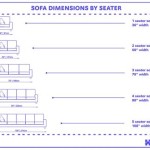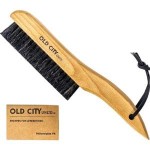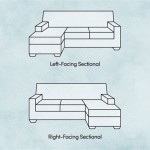How To Clean Cat Urine From Sofa Cushion
Dealing with cat urine on a sofa cushion is a common challenge for cat owners. While frustrating, prompt and thorough cleaning can effectively remove the urine, odor, and prevent repeat offenses. Untreated urine can permanently damage the fabric, create lingering unpleasant smells, and encourage the cat to urinate in the same spot again. Therefore, understanding the proper cleaning techniques and products is crucial for maintaining a clean and odor-free home.
The key to successful urine removal lies in acting quickly. Fresh urine is much easier to clean than dried urine, which has already sunk deeper into the fibers and potentially caused staining. The longer the urine remains, the more difficult it becomes to neutralize the odor-causing compounds.
Before commencing the cleaning process, it is essential to identify the affected area accurately. Sometimes, the urine spot is not immediately visible, especially if the cushion fabric is dark or heavily patterned. A blacklight can be a valuable tool for locating urine stains, as urine typically fluoresces under ultraviolet light. Turn off the lights in the room and shine the blacklight over the sofa cushion. Any urine stains will appear as yellowish-greenish marks.
Once the urine stain is located, the cleaning process can begin. This involves absorbing the urine, cleaning the affected area, neutralizing the odor, and preventing future accidents. Each step is crucial for complete and effective urine removal.
Absorbing the Fresh Urine
If the urine is still wet, the first step is to absorb as much liquid as possible. Use paper towels or clean, absorbent cloths to blot the urine. Avoid rubbing, as this will only spread the urine and push it deeper into the cushion fibers. Press down firmly on the affected area to allow the paper towels or cloths to soak up the urine. Continue blotting until no more urine is being absorbed.
It is advisable to use multiple layers of paper towels or a thick, absorbent cloth to maximize absorption. Replace the saturated towels or cloths frequently to ensure that the cleaning process is effective. Applying pressure to the blotting material can assist in drawing out the urine from deeper layers of the cushion.
After blotting as much urine as possible, consider using an enzymatic cleaner designed for pet urine. These cleaners contain enzymes that break down the uric acid crystals in the urine, which are responsible for the persistent odor. However, it is crucial to remove as much liquid as possible before applying any cleaning solution. Excess moisture can hinder the effectiveness of the enzymatic cleaner.
Cleaning the Affected Area
Once the excess urine has been absorbed, the next step is to clean the affected area thoroughly. There are several cleaning solutions that can be used, including enzymatic cleaners, baking soda solutions, vinegar solutions, and commercial upholstery cleaners. The choice of cleaning solution depends on the type of fabric, the severity of the stain, and personal preference.
Before applying any cleaning solution to the entire stain, it is crucial to test it on an inconspicuous area of the cushion to ensure that it does not cause discoloration or damage. Apply a small amount of the cleaning solution to the hidden area and wait for several minutes. Check for any adverse reactions, such as fading, staining, or fabric damage. If there are no adverse reactions, the cleaning solution can be safely used on the urine stain.
Enzymatic cleaners are highly effective for removing cat urine odors. These cleaners contain enzymes that break down the uric acid crystals in the urine, which are the primary source of the odor. Follow the manufacturer's instructions carefully when using an enzymatic cleaner. Typically, the cleaner is sprayed onto the affected area and allowed to sit for a specified period of time before being blotted up with a clean cloth.
A baking soda solution can also be used to clean the affected area. Mix baking soda with water to create a paste. Apply the paste to the urine stain and allow it to dry completely. Once the paste is dry, vacuum it up thoroughly. Baking soda is a natural deodorizer and can help to absorb any remaining odors.
A vinegar solution is another effective cleaning option. Mix equal parts of white vinegar and water in a spray bottle. Spray the solution onto the urine stain and allow it to sit for several minutes. Blot the area with a clean cloth. The vinegar solution can help to neutralize the odor and break down the stain.
Commercial upholstery cleaners can also be used to clean the affected area. Choose a cleaner that is specifically designed for the type of fabric on the sofa cushion. Follow the manufacturer's instructions carefully when using a commercial upholstery cleaner. Ensure that the cleaner is safe for use on pet stains and odors.
Regardless of the cleaning solution used, it is essential to avoid over-wetting the cushion. Excess moisture can promote mold and mildew growth, which can create additional odor problems and damage the fabric. Use a spray bottle to apply the cleaning solution sparingly, and blot up any excess liquid with a clean cloth.
Neutralizing the Odor and Preventing Future Accidents
After cleaning the affected area, it is crucial to neutralize the odor completely. Even if the stain is no longer visible, lingering odors can attract the cat back to the same spot and result in repeat accidents. Several methods can be used to neutralize the odor, including using enzymatic odor eliminators, baking soda, and essential oils.
Enzymatic odor eliminators are specifically designed to neutralize pet odors, including cat urine. These products contain enzymes that break down the odor-causing molecules, effectively eliminating the odor. Follow the manufacturer's instructions carefully when using an enzymatic odor eliminator. Typically, the product is sprayed onto the affected area and allowed to dry completely.
Baking soda is a natural deodorizer and can be used to absorb any remaining odors. Sprinkle baking soda liberally over the cleaned area and allow it to sit for several hours or overnight. Vacuum up the baking soda thoroughly. Baking soda is particularly effective for neutralizing odors that have penetrated deep into the cushion fibers.
Essential oils can also be used to neutralize odors and deter the cat from returning to the same spot. Certain essential oils, such as lavender, eucalyptus, and citrus, have natural odor-fighting properties and can be appealing to humans but often disliked by cats. Dilute the essential oil with water and spray it lightly onto the cleaned area. However, it is crucial to research the safety of essential oils for pets before using them, as some oils can be toxic to cats.
To prevent future accidents, it is essential to address the underlying cause of the cat's urination behavior. In some cases, the cat may be urinating outside the litter box due to a medical condition, such as a urinary tract infection or bladder stones. Consult a veterinarian to rule out any medical causes.
If the cat is healthy, the urination behavior may be due to stress, anxiety, or litter box issues. Ensure that the cat has access to a clean and accessible litter box. The litter box should be large enough for the cat to turn around in comfortably and should be located in a quiet and private area. Consider using a different type of litter to see if the cat prefers it.
Provide the cat with plenty of enrichment, such as toys, scratching posts, and climbing structures. This can help to reduce stress and prevent boredom, which can contribute to inappropriate urination behavior. Spend time playing with the cat and providing positive attention. A happy and content cat is less likely to exhibit problem behaviors.
If the cat is displaying territorial marking behavior, consider using a pheromone diffuser or spray. These products contain synthetic feline pheromones that can help to reduce anxiety and territorial marking. Place the diffuser in the area where the cat is urinating or spray the pheromone spray onto the furniture.
Cleaning cat urine from sofa cushions requires a multi-step approach that involves absorbing the urine, cleaning the affected area, neutralizing the odor, and preventing future accidents. By following these steps carefully, cat owners can effectively remove urine stains and odors and maintain a clean and odor-free home. Addressing the underlying cause of the cat's urination behavior is also crucial for preventing future accidents.
Regularly inspect the sofa cushions for any signs of urine stains or odors. Early detection can make the cleaning process much easier and prevent permanent damage to the fabric. Consider using a waterproof sofa cover to protect the cushions from future accidents.
With patience and persistence, cat urine stains and odors can be effectively removed from sofa cushions. By understanding the proper cleaning techniques and addressing the underlying cause of the cat's urination behavior, cat owners can maintain a clean and healthy environment for both themselves and their feline companions.

How To Remove Cat Smell From A Couch 5 Quick Easy Tips Catster

Dealing With Cat Urine On Cushions Tips And Tricks

How To Clean Cat Urine Out Of Couch Cushions Aliving Home Cleaning Tips

How To Clean Off A Couch Easy Diy Solutions

How To Clean Off A Couch Easy Diy Solutions

How To Get Rid Of Cat Smell In Your Home Puroclean Emergency Recovery Services

How To Remove Stains And On Couch Mattress So Easy You Have Try This Andrea Jean

How To Get Urine Out Of A Couch Remove Stains From The

Remove Cat Urine Smell From Leather Couch

How To Remove Cat Urine Smell From Sofa Easy Step By








